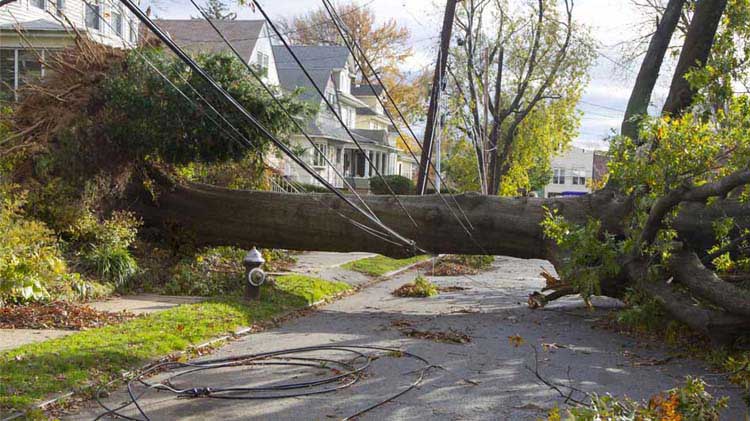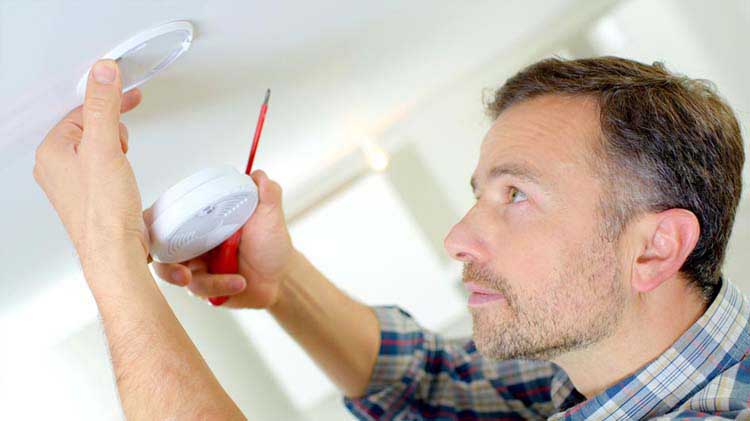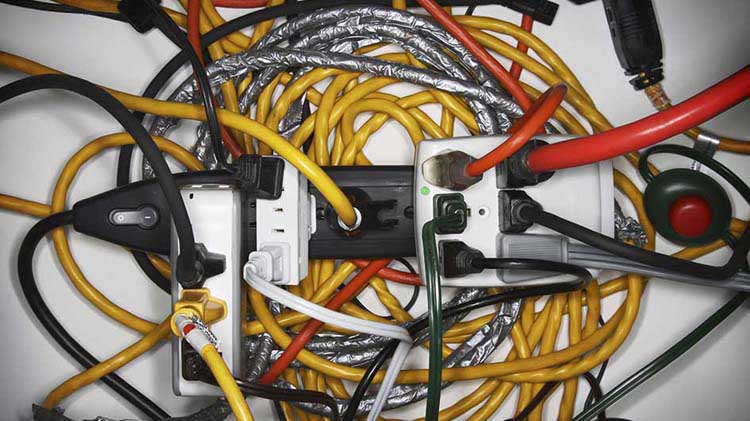Can a power surge damage my electronics?
An invisible culprit may be harming your devices. Learn how to protect your property.
Maybe you know this story: There's a thunderstorm. Lightning strikes nearby. The power cuts out for a moment, then returns. But when you try to switch on the TV, it doesn't seem to work.
Electrical surges can instantly overload and short out the circuitry of home electronics and anything else plugged into the wall, or they can degrade them over time. Learning more about surges can help save money and how to protect your property.
How does a power surge cause damage?
In the United States, most homes use electrical power in the form of 120 volt, 60 hertz, single phase, alternating current.
However, the voltage is not delivered at a constant 120 volts. With alternating current, the voltage rises and falls in a predetermined rhythm. The voltage oscillates from 0 to a peak voltage of 169 volts. Most appliances and electronics used in the United States are designed to be powered by this form of generated electricity.
But during a power surge, the voltage exceeds the peak voltage of 169 volts.
A spike in voltage can be harmful to appliances and electrical devices in your home. Increasing voltage above an appliance's normal operating voltage can cause an arc of electrical current within the appliance, and the heat generated in the arc can cause damage to the electronic circuit boards and other electrical components.
Smaller, repeated power surges could be the reason your TV or cordless phone mysteriously stops working. These smaller surges can slowly cause damage, so your computer or stereo may continue to function until the integrity of the electronic components finally erode. This shortens the life span of appliances and electronics.
What causes a power surge?
Power surges can originate from the electric utility company during power grid switching. Another common cause of power surges, especially the most powerful ones, is lightning. Power surges can also originate inside a home when large appliances like air conditioners and refrigerator motors turn on and off.
Power surges can enter a home through several pathways. In the case of lightning, it can take the path of the cable TV or satellite dish cable, through the incoming telephone lines, or through the incoming electrical service line.
How to prevent power surges
Point-of-use surge protection devices (SPDs), combined with a good grounding system, should protect your electronic and electrical appliances from most electrical surges. An SPD does not suppress or arrest a surge; it actually diverts the surge to the ground.
One familiar point-of-use surge suppressor looks like a regular plug strip. However, unless it specifically says so, don't assume your plug strip offers surge protection.
You can also install special electrical outlets that offer surge protection. Surge protection outlets are useful in locations where there isn't room for a plug-in surge protector, such as near a countertop microwave oven.
The two-tiered approach
- Point-of-use devices can protect particular appliances in your home, but a more comprehensive approach to surge protection is to combine point-of-use devices with another device, like a service entrance surge protector or an electrical panel surge protector. By installing two tiers of surge protection, a better protection system is created.
- Service entrance surge protection devices usually mount in or on your main electrical panel or at the base of the electric meter. Using a service entrance surge protection device provides protection for your entire electrical system; they protect things such as motors, lights, outlets, light switches and all the other hardwired items in the house that do not plug into an electrical outlet and can't be connected to a point-of-use surge protection device. And if the power surge is created by a lightning strike or power fluctuation on the utility lines, the service entrance surge protection device can reduce the power surge to a lower level before it gets to the point-of-use surge protection device.
Service entrance surge protection devices will either be transient volt surge suppressors or secondary surge arresters. Consult an electrician for further advice on how to install a service entrance surge suppression device.
Surge protectors should be viewed as having a limited lifespan and in areas of the country with high surge activity, protectors may need to be replaced periodically. When selecting a point-of-use surge protector, look for one that has some means of letting the user know if it has failed and is no longer protecting the connected equipment, such as an indicator light or audible alarm.




